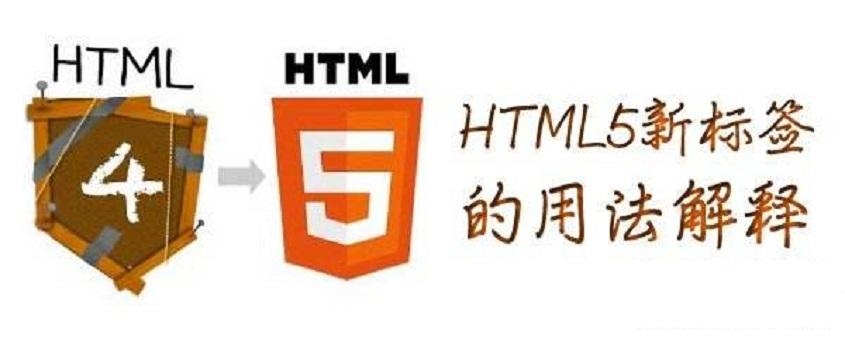 详解"/>
详解"/>
Promise使用详解
1,then()方法
简单来讲, then 方法就是把原来的回调写法分离出来,在异步操作执行完后,用链式调用的方式执行回调函数。 而 Promise 的优势就在于这个链式调用。我们可以在 then 方法中继续写 Promise 对象并返回,然后继续调用 then 来进行回调操作。(1)下面通过样例作为演示,我们定义做饭、吃饭、洗碗( cook、 eat、 wash)这三个方法,它们是层层依赖的关系,下一步的的操作需要使用上一部操作的结果。(这里使用 setTimeout 模拟异步操作)
| 1 2 3 4 5 6 7 8 9 10 11 12 13 14 15 16 17 18 19 20 21 22 23 24 25 26 27 28 29 30 31 32 33 34 | //做饭 function cook(){ console.log( '开始做饭。' ); var p = new Promise( function (resolve, reject){ //做一些异步操作 setTimeout( function (){ console.log( '做饭完毕!' ); resolve( '鸡蛋炒饭' ); }, 1000); }); return p; } //吃饭 function eat(data){ console.log( '开始吃饭:' + data); var p = new Promise( function (resolve, reject){ //做一些异步操作 setTimeout( function (){ console.log( '吃饭完毕!' ); resolve( '一块碗和一双筷子' ); }, 2000); }); return p; } function wash(data){ console.log( '开始洗碗:' + data); var p = new Promise( function (resolve, reject){ //做一些异步操作 setTimeout( function (){ console.log( '洗碗完毕!' ); resolve( '干净的碗筷' ); }, 2000); }); return p; } |
(2)使用 then 链式调用这三个方法:
| 1 2 3 4 5 6 7 8 9 10 | cook() .then( function (data){ return eat(data); }) .then( function (data){ return wash(data); }) .then( function (data){ console.log(data); }); |
当然上面代码还可以简化成如下:
| 1 2 3 4 5 6 | cook() .then(eat) .then(wash) .then( function (data){ console.log(data); }); |
(3)运行结果如下:
2,reject()方法
上面样例我们通过 resolve 方法把 Promise 的状态置为完成态( Resolved),这时 then 方法就能捕捉到变化,并执行“ 成功”情况的回调。 而 reject 方法就是把 Promise 的状态置为已失败( Rejected),这时 then 方法执行“ 失败”情况的回调( then 方法的第二参数)。(1)下面同样使用一个样例做演示
| 1 2 3 4 5 6 7 8 9 10 11 12 13 14 15 16 17 18 19 20 21 22 23 24 25 26 27 28 | //做饭 function cook(){ console.log( '开始做饭。' ); var p = new Promise( function (resolve, reject){ //做一些异步操作 setTimeout( function (){ console.log( '做饭失败!' ); reject( '烧焦的米饭' ); }, 1000); }); return p; } //吃饭 function eat(data){ console.log( '开始吃饭:' + data); var p = new Promise( function (resolve, reject){ //做一些异步操作 setTimeout( function (){ console.log( '吃饭完毕!' ); resolve( '一块碗和一双筷子' ); }, 2000); }); return p; } cook() .then(eat, function (data){ console.log(data + '没法吃!' ); }) |
(2)如果我们只要处理失败的情况可以使用 then(null, ...),或是使用接下来要讲的 catch 方法。
| 1 2 3 4 | cook() .then( null , function (data){ console.log(data + '没法吃!' ); }) |
3,catch()方法
(1)它可以和 then 的第二个参数一样,用来指定 reject 的回调| 1 2 3 4 5 | cook() .then(eat) . catch ( function (data){ console.log(data + '没法吃!' ); }); |
(2)它的另一个作用是,当执行 resolve 的回调(也就是上面 then 中的第一个参数)时,如果抛出异常了(代码出错了),那么也不会报错卡死 js,而是会进到这个 catch 方法中。
| 1 2 3 4 5 6 7 8 9 10 11 12 13 14 15 16 17 18 19 20 21 22 23 24 25 26 27 28 29 30 31 32 | //做饭 function cook(){ console.log( '开始做饭。' ); var p = new Promise( function (resolve, reject){ //做一些异步操作 setTimeout( function (){ console.log( '做饭完毕!' ); resolve( '鸡蛋炒饭' ); }, 1000); }); return p; } //吃饭 function eat(data){ console.log( '开始吃饭:' + data); var p = new Promise( function (resolve, reject){ //做一些异步操作 setTimeout( function (){ console.log( '吃饭完毕!' ); resolve( '一块碗和一双筷子' ); }, 2000); }); return p; } cook() .then( function (data){ throw new Error( '米饭被打翻了!' ); eat(data); }) . catch ( function (data){ console.log(data); }); |
这种错误的捕获是非常有用的,因为它能够帮助我们在开发中识别代码错误。比如,在一个 then() 方法内部的任意地方,我们做了一个 JSON.parse() 操作,如果 JSON 参数不合法那么它就会抛出一个同步错误。用回调的话该错误就会被吞噬掉,但是用 promises 我们可以轻松的在 catch() 方法里处理掉该错误。
(3)还可以添加多个 catch,实现更加精准的异常捕获。
| 1 2 3 4 5 6 7 8 9 10 11 | somePromise.then( function () { return a(); }). catch (TypeError, function (e) { //If a is defined, will end up here because //it is a type error to reference property of undefined }). catch (ReferenceError, function (e) { //Will end up here if a wasn't defined at all }). catch ( function (e) { //Generic catch-the rest, error wasn't TypeError nor //ReferenceError }); |
4,all()方法
Promise 的 all 方法提供了并行执行异步操作的能力,并且在所有异步操作执行完后才执行回调。(1)比如下面代码,两个个异步操作是并行执行的,等到它们都执行完后才会进到 then 里面。同时 all 会把所有异步操作的结果放进一个数组中传给 then。
| 1 2 3 4 5 6 7 8 9 10 11 12 13 14 15 16 17 18 19 20 21 22 23 24 25 26 27 28 29 30 | //切菜 function cutUp(){ console.log( '开始切菜。' ); var p = new Promise( function (resolve, reject){ //做一些异步操作 setTimeout( function (){ console.log( '切菜完毕!' ); resolve( '切好的菜' ); }, 1000); }); return p; } //烧水 function boil(){ console.log( '开始烧水。' ); var p = new Promise( function (resolve, reject){ //做一些异步操作 setTimeout( function (){ console.log( '烧水完毕!' ); resolve( '烧好的水' ); }, 1000); }); return p; } Promise .all([cutUp(), boil()]) .then( function (results){ console.log( "准备工作完毕:" ); console.log(results); }); |
(2)运行结果如下:
5,race()方法
race 按字面解释,就是赛跑的意思。 race 的用法与 all 一样,只不过 all 是等所有异步操作都执行完毕后才执行 then 回调。而 race 的话只要有一个异步操作执行完毕,就立刻执行 then 回调。 注意:其它没有执行完毕的异步操作仍然会继续执行,而不是停止。(1)这里我们将上面样例的 all 改成 race
| 1 2 3 4 5 6 | Promise .race([cutUp(), boil()]) .then( function (results){ console.log( "准备工作完毕:" ); console.log(results); }); |
(2) race 使用场景很多。比如我们可以用 race 给某个异步请求设置超时时间,并且在超时后执行相应的操作。
| 1 2 3 4 5 6 7 8 9 10 11 12 13 14 15 16 17 18 19 20 21 22 23 24 25 26 27 28 29 30 | //请求某个图片资源 function requestImg(){ var p = new Promise( function (resolve, reject){ var img = new Image(); img.onload = function (){ resolve(img); } img.src = 'xxxxxx' ; }); return p; } //延时函数,用于给请求计时 function timeout(){ var p = new Promise( function (resolve, reject){ setTimeout( function (){ reject( '图片请求超时' ); }, 5000); }); return p; } Promise .race([requestImg(), timeout()]) .then( function (results){ console.log(results); }) . catch ( function (reason){ console.log(reason); }); |
- 如果 5 秒内图片请求成功那么便进入 then 方法,执行正常的流程。
- 如果 5 秒钟图片还未成功返回,那么则进入 catch,报“图片请求超时”的信息。
原文出自: www.hangge 转载请保留原文链接: .html
更多推荐
Promise使用详解












发布评论